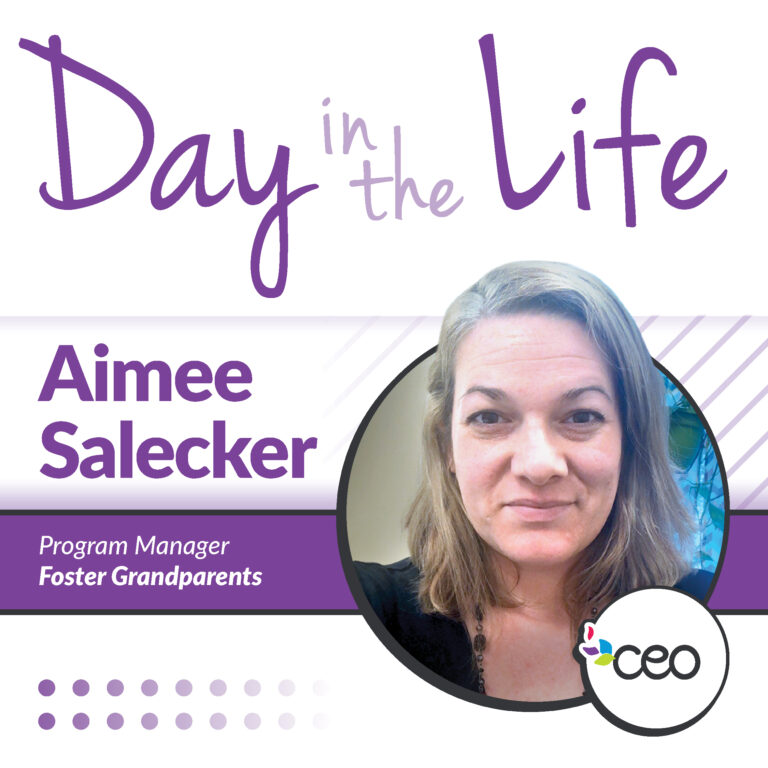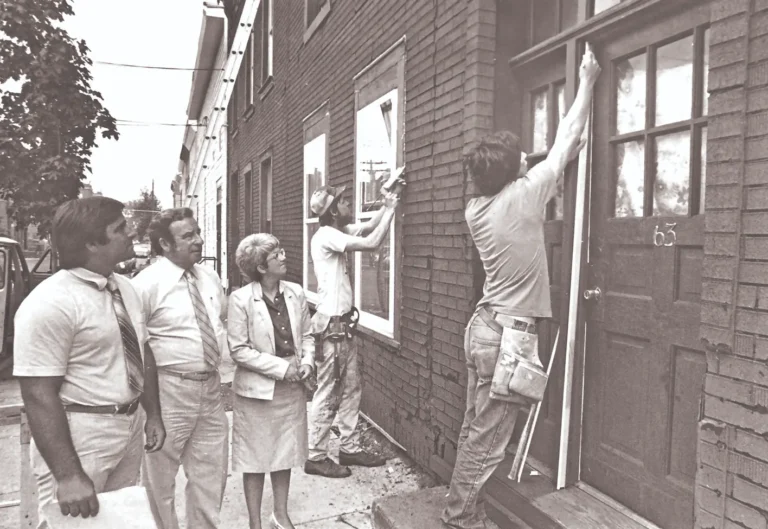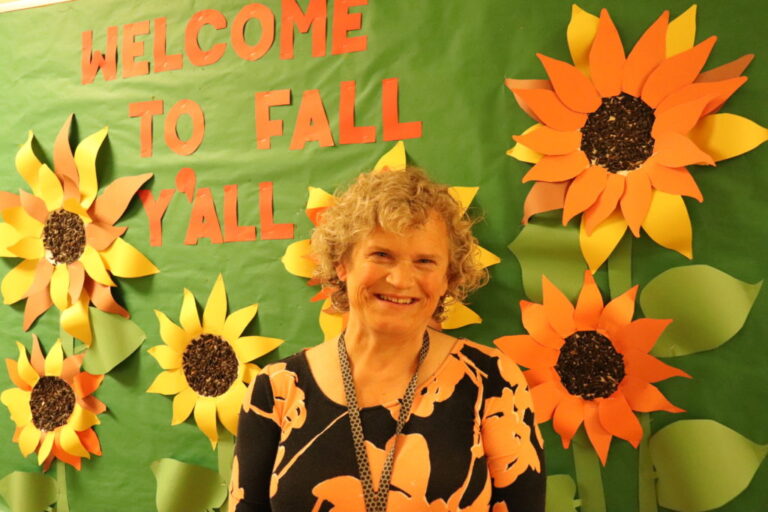Christina O’Brien- Preschool Education Disabilities Specialist
Christina has worked at CEO for nine years, all nine of those years focused on special services within the Early Childhood Services program. In her position as the Preschool Disability Specialist, Christina is part of the Early Childhood Services Leadership team. She supports teachers, center managers, families, and students in her role. Follow along as we shadow Christina in her work throughout CEO for one day.
8am
Christina commutes from Latham to Troy School 12 where CEO has five Universal Pre Kindergarten classrooms. Christina is part of the Education Team within Early Childhood Services. Along with Lorell Fitzsimmons, Jen Baisley, and the Directors: Tia Nunziato, Pam Maxstadt and Lori Tantakis, Christina meets weekly to talk about all the classrooms, all the children, and the initiatives happening across CEO’s Early Childhood Services program.These Monday meetings help Christina to plan for the week, and today she’s starting out with check-ins at School 12.
While at School 12, Christina visits each of the five classrooms to see how they are doing, and if they need any support. There are currently 73 children receiving special services across CEO’s program. Christina is there to help support children and teachers. If a classroom teacher identifies a child that is having difficulty communicating,
Christina will go in and observe to see if there are any different strategies the classroom staff could try to better support the child.
She also oversees CEO’s Behavior Specialist, Jocelyn Cook. Christina and Jocelyn identify if there is something that can be modified in the classrooms for individual children to help a bit more as they make it through the day.
“Every day is different, not only am I supporting classrooms, children, and center managers, but I’m also going through the special education process with the Family Advocates and family,” says Christina.
9am
After visiting School 12’s classrooms, Christina heads over to the district offices for a CPSE (Committee on Preschool Special Education) appointment with a family. The CPSE is the last part of the special education evaluation process. The process of working with CPSE begins with a referral, then an evaluation, then an appointment at the district for a CPSE meeting with the family.
This year Christina made 93 referrals to the school districts. If a classroom teacher or parent has a concern about their child for special education (speech, gross motor, fine motor), the parent signs the referral form, and Christina sends it to the school district if the child is over three or to Early Childhood Intervention if they are under three years old. The parents then have to register through the district, so Christina helps the family and CEO’s Family Advocates as they navigate through the system. If the child is particularly needy, Christina helps them closely throughout the process. It’s a true collaborative effort between everyone in the education team, and teaching team, Family Advocate and Center Managers. Of the 93 referrals, half are typically guided through the process fully.
With this particular CPSE meeting, Christina attended to help support the family and advocate for the child to help him get the services he needed. That might look like:
- Speech therapy: working on expressive language
- Occupational therapy: works on fine motor skills
- Physical therapy: helps support their gross motor skills
- Special education itinerant teacher: come into the classroom and work on different goals to help the child get through the day. Help support his cognitive skills.
A parent or guardian might not understand the process, or may not have the language to truly advocate. It’s nice to have a familiar face. If Christina can’t attend, a Family Advocate or teacher will go.
“It can be really hard. This past week a child was struggling with some of the social
emotional components, and needed more support. A lot of times having these supports so early means that by the time they make it to kindergarten they don’t need those services anymore. But it can be heart wrenching for the parent to have these conversations, and help them see beyond any stigma associated with getting special education support for their child.”
10am
Christina heads to CEO’s Lansingburgh FRC. She starts out by checking in with the center managers to see how they are doing and if they need anything in particular, or if she should check in with any specific classroom. Christina then moves on to a planned social emotional observation.
Christina takes some time to observe the classroom dynamic in two classrooms. She is focusing on the teachers and how they are using social emotional skills in the classroom.
Her goal is to give suggestions and feedback and tell them what a great job they are doing. These observations typically last between 45 minutes to an hour. While she is observing today, at other times, Christina will go in and support the classroom team if they are having an issue with a particular child and offer suggestions and give support.
“ABCs are important, but the social emotional piece matters even more when they go to kindergarten. It matters if they know how to share, how to communicate feelings, how to make a friend, etc.”
Christina has a Masters in Special Education with a concentration in children with social emotional disorders. She used to teach in a classroom specifically with children with social emotional disorders. “So I have been in the classroom and I know what it’s like to celebrate small victories, and also to focus on baby steps, like not having a chair thrown at you today. I think that helps when talking with the teachers, because I know what it’s like to be in the classroom. It doesn’t matter if he can do his abcs if he’s throwing a chair.”
12pm
After her observations, Christina sits down and reviews her thoughts and notes with the center managers. She tells them about what she observed, and any suggestions she had for the teachers. Christina will share her compliments and recommendations with the teachers via email later on as well.
“Another great part of my job is that I get to know all of the children in our preschool classrooms,” says Christina. “Through the observations and the in-classroom support, I really get to know the whole Early Childhood Services team.”
Lansingburgh FRC is also home to two Capital District Beginnings integrated classrooms. CEO collaborates with Capital District Beginnings, to offer more comprehensive support via integrated classrooms with four teachers (two Head Start, two Beginnings). Christina helps to support the integrated classrooms by meeting with Beginnings staff and identifying needs in the classroom and children to support.
“It’s a well-oiled machine. We are able to support children in those classrooms that we would typically lose to another program, because we wouldn’t have that higher level of support. If we didn’t have Beginnings in our program, then we would potentially lose those students. The teams work really hard together. It’s a great program.”
12:30pm
Christina heads back to the Early Childhood Services administrative offices on Fifth Avenue in Troy for the afternoon.
1pm
Christina uses her in office time to write her notes from her observations in Lansingburgh. She’ll review the notes with the teacher next week, but for now sends the notes in an email thanking the teacher and letting her know that she had a great time observing the class; that the teacher is doing a great job, and that she’d like to meet to review a few potential suggestions next week.
After working on observation notes, Christina transitions to working on an email for the Early Childhood Services team called the Busby Buzz. These weekly emails focus on the PYRAMID Model that the ECS team uses to integrate a social emotional and trauma-based approach to teaching throughout the program. The PYRAMID model is based on social emotional skills, and operates with three tiers. The first tier focuses on what needs to be in the classroom to support the social emotional needs of the children. The second tier focuses on the support and behavior modeling children need to help them navigate the day-to-day activities in the classroom. The third tier focuses on children that might need more support.
To keep the PYRAMID model fresh in everyone’s mind, Christina sends out weekly tip emails, and a monthly Busby’s Monthly Buzz. “At the beginning of the month we explain a particular skill. We pick an indicator that we think will support our children, and that’s the indicator we work on all month. We also do a PYRAMID shout out to classrooms that we see using the skills. I also try to include something they can try in the classroom. This past month’s theme was working on “building on peer interactions”. Teachers can submit classroom photos showing them doing the activity in the classroom and they get entered in a raffle for social emotional teaching tools. It’s a great way to keep everyone connected and motivated.”
3pm
Christina finishes up her day by answering emails and putting data into COPA (the database software the Early Childhood Services team uses to track all children). She plans her next day and where she might be starting. With thirteen different school districts (Troy, Rensselaer, Averill Park, etc.), and CEO’s seven centers, Christina must work hard to plan out her days. She prides herself in her good working relationship with the school districts, as that close collaboration helps as the children transition to receiving services and transition to kindergarten. Showing the parents the classroom that the child will be in, to help them see the importance of services and steer them away from refusing services.
After finishing her emails and planning, Christina heads home for the day.
What is your favorite part of your job?
“All of our centers have different needs. It’s never the same thing, every day is different. The needs of the communities are very different between Hoosick Falls and Lansingburgh, for example, but the support we offer the children can be very similar.”
“Our kids have a lot going on, and their behaviors are communicating something to us. Maybe it’s ‘I can’t communicate what my needs are. Or I didn’t sleep last night, and I’m exhausted.’ It’s a neat challenge to try to figure out what those behaviors are telling us, and then giving the teachers and team the strategies to work with the child and then see success come from those plans and strategies.
“I love how much we focus on the family piece, Head Start gets how much that collaboration matters. We all have to be on the same page to help our children succeed. Being here, I feel like some days are really tough, but I know the children are getting what they need, so it’s satisfying. I love that we are able to think creatively about how to support these children before it gets to a point of no return for them. That’s incredibly rewarding!”




